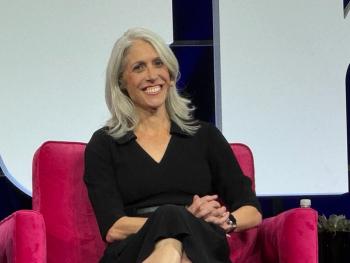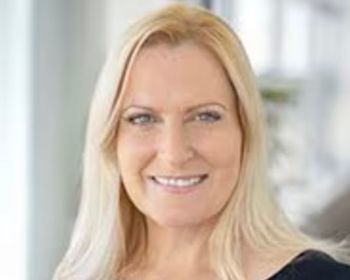
Ardent Health is looking to be more than a hospital company
The Tennessee-based system has been acquiring more urgent care facilities, and is focusing on mid-size urban markets with room to grow.
Ardent Health operates 30 hospitals in six states, but the health system is looking at urgent care facilities as a key component of its growth.
A for-profit system based in Brentwood, Tennessee,
Ethan Chernin, president of health services at Ardent Health, says the addition and expansion of urgent care clinics and ambulatory facilities helps strengthen the company’s presence in appealing markets.
“Our goal is to move away from just becoming a traditional hospital company to becoming a true health system with that robust ambulatory care continuum, having the assets for any type of care,” Chernin tells Chief Healthcare Executive.
“So we can't just be a traditional brick-and-mortar hospital system,” he says. “We really are looking at how we can be consumer-friendly.”
With the acquisition of the urgent care centers in New Mexico and Oklahoma, Ardent wanted to not only expand its presence in those regions but also sought to “meet patients where they want to be met,” he says.
“We know consumers don't always want to go to the emergency room. They don't want to wait in line. They don't want to go where there's a long queue,” Chernin says. “We're trying to bring convenient care to the communities that we serve, and that's something that we have a very strong record in doing.”
- Read more:
Ardent Health CEO expresses optimism for AI
Focused on mid-sized markets
Ardent has been looking to grow in areas that have sizeable populations but aren’t necessarily major metropolitan areas.
Chernin says mid-size cities represent a sweet spot for the health system.
“Ardent in general, our focus has been in mid-size, urban markets, which for us, gives us multiple avenues for growth, and it allows us to really assume this unique position by being big enough to be relevant, while small enough to be nimble,” Chernin says.
Ardent is also focusing on communities that are growing, he says.
The approach is good for the system, its stakeholders and its communities, he says.
Ardent also is gaining more opportunities to expand services in rural communities.
“These are communities that have some rural opportunities for us to basically expand our footprint and bring care to the rural communities that may not have access to traditional health care,” Chernin says. “So we found that these mid-sized urban markets were a great opportunity for us to really expand that hub-and-spoke model, and that could feed for more acute care, feed the hospitals, feed your emergency rooms, but you have to have that rural sense of belonging in order to have care in all the areas.”
By targeting mid-size markets, Ardent is poised to grow more organically, Chernin says. And it’s setting up more urgent care centers in markets with primary care clinics and Ardent’s hospitals. The urgent care clinics can help people avoid unnecessary trips to the hospital, and potentially get more patients into the system.
“It's very hard to have urgent cares in markets where you don't have that longitudinal care continuum,” Chernin says. “You're going to need hospitals, you're going to need urgent cares, you're going to need ambulatory surgery centers. You’ve got the physician clinics. And we think, as being a health system with all of those different care sites, we can really plug you into where you need to be, for the right care, at the right time, the right place.”
Reaching new patients
With the expansion of urgent care centers, Ardent isn’t simply offering more convenience to existing customers. It’s reaching patients who haven’t had contact with the system.
Roughly a quarter or more of those going to the urgent care centers haven’t been to an Ardent facility previously, Chernin says.
“They've never been to the emergency room, never been hospitalized,” he says. “So these are brand new members in our communities that are using our urgent cares.”
The urgent care clinics can help people avoid unnecessary trips to the hospital, and potentially get more patients into the system.
Some of these new patients in urgent care can be connected to primary care physicians. Eventually, those patients can receive preventive care and screenings that could detect problems that could become more serious.
“One of the things we're really passionate about at Ardent, and some of my background and my passion, is around population health management,” Chernin says. “We call our industry healthcare, but really, we're really sick care.”
“If we are truly doing healthcare, we try to keep you healthy,” he says. “And so the idea of being proactive, to link you from an urgent care where you've never had access to care or never used it, to do preventative-type measures to keep you healthy, that's just a great opportunity to plug you into the system to keep you healthy and have that continuity of care across all those different asset classes, not just the urgent care.”
Ardent is looking to continue developing standalone urgent care centers and facilities providing both primary care and urgent care.
Chernin also sees room to add more facilities in the Oklahoma and New Mexico markets.
“We still think that the community still supports more, and so just because we've acquired these in New Mexico and Oklahoma, doesn't necessarily mean we're done in those markets,” he says.
Ardent sees a lot of growth potential in its markets, Chernin says.
“We are in areas that we want to provide the best care that we can possibly provide for our populations. We know we want to expand our geographic reach,” he says.
“The front door of our health system is changing,” he says. “The rural reach is really, really important. Accessibility and convenience is an absolute must. And we know that cost-effective health care is becoming more and more top of mind for folks. And so, along those lines, you're going to see us really continue to grow in these markets.”








































